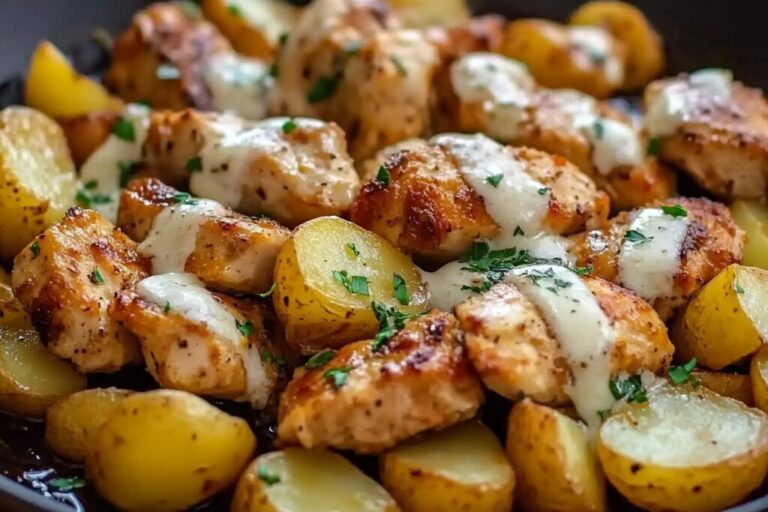Roasted Butternut Squash Soup
Introduction
Fall Soups to Warm Up Your Season
As the crisp fall air sets in and the leaves start to turn, there’s nothing better than cozying up with a delicious bowl of soup. This season, explore an array of comforting fall soup recipes that are perfect for dinners, lunches, or even family gatherings. With recipes ranging from creamy bisques to hearty stews, this guide will ensure your autumn is filled with warmth and flavor.
Detailed Ingredients with Measures
Ingredients from Delightful Fall Recipes
Each fall soup recipe comes with an array of mouthwatering ingredients perfectly paired to capture the essence of autumn. Recipes include detailed measures for items such as:
– Onions, finely sliced
– Butternut squash, peeled and cubed
– Garlic cloves, minced
– Potatoes, diced
– Fresh cream or coconut milk
– Whole-grain or white bread for serving
– Fresh herbs, such as sage, thyme, or rosemary
– Olive oil for sautéing vegetables
– A variety of broths, like chicken or vegetable
– Autumn spices, such as nutmeg or cinnamon
Follow the recipes to prepare your soups with precision and ease.
Prep Time
Prepare with Ease
Most fall soup recipes are created with efficiency in mind. From gathering fresh autumn ingredients to blending your soup, prep times for recipes typically range from just 15 to 30 minutes. These recipes are perfect for anyone, whether you’re a busy home chef or a culinary enthusiast seeking to experiment with seasonal produce.
Cook Time, Total Time, Yield
Cook Delicious Fall Soups
The cooking time for these seasonal soups varies, with most recipes taking between 20 to 45 minutes. Total time, including prep and cook durations, often ranges from 35 to 60 minutes. Each recipe is designed to serve approximately 4 to 6 people, making enough to share with your family or to keep some for later meals. If you’re looking for delightful leftovers, these soups store wonderfully in the fridge or freezer, retaining their full flavor when reheated.
Enjoy Fall to the Fullest
Fall is the perfect season to delve into the comfort and warmth of soups. With these curated recipes, you’ll be inspired to celebrate the harvest flavors and cozy up with the best dishes made for chilly autumn evenings!
“`html
Detailed Directions and Instructions
Step 1: Prepare Ingredients
Peel and chop all vegetables as required for your chosen recipe. Measure out any spices, herbs, and other ingredients to have them ready. Preheat your oven, if necessary.
Step 2: Sauté Aromatics
Heat a large pot or Dutch oven over medium heat. Add oil or butter and cook onions, garlic, and other base aromatics until softened and fragrant.
Step 3: Cook Vegetables
Add the vegetables into the pot. Stir them to coat with the oil or butter, and cook for several minutes to start softening them.
Step 4: Add Liquid
Pour in your choice of stock, broth, or water. Add any additional seasonings or spices. Stir to combine and ensure the vegetables are submerged.
Step 5: Simmer
Bring the soup to a boil, then reduce to a simmer. Cover and allow the ingredients to cook until the vegetables are tender and the flavors have melded, generally 20–40 minutes depending on the recipe.
Step 6: Blend (Optional)
If making a creamy soup, use a blender or an immersion blender to puree the soup until smooth. Take precautions with hot liquids when handling a blender. Alternatively, leave the soup chunky for texture.
Step 7: Adjust Seasoning
Taste test the soup and adjust the seasoning as required by adding more salt, pepper, or spices. You can also add cream, milk, or cheese at this stage if the recipe calls for it.
Step 8: Serve
Ladle the soup into bowls. Garnish as specified in the recipe, such as with croutons, herbs, or shredded cheese. Serve warm.
Notes
Note 1: Ingredient Adjustments
Feel free to swap out or add ingredients based on what you have available. For instance, use sweet potatoes instead of butternut squash or adjust spices to suit your taste.
Note 2: Storing Soup
Allow leftover soup to cool completely before transferring to airtight containers. Most soups will keep in the fridge for 3 to 4 days or in the freezer for up to 3 months.
Note 3: Texture Preferences
If blending a soup, always start with small increments of liquid to control the consistency. Add more liquid progressively until you reach your desired texture.
Note 4: Enhancing Flavor
Add a squeeze of lemon, a splash of vinegar, or a dollop of sour cream to brighten the soup just before serving.
Note 5: Reheating
Reheat soup on the stovetop over medium heat, stirring occasionally. Add a splash of water or broth if the soup has thickened too much during storage.
“`
Cook Techniques
Roasting Vegetables for Soup
Roasting vegetables like butternut squash, carrots, or sweet potatoes before adding them to your soup can deepen their flavor and add a subtle smokiness to the dish. Simply coat the vegetables in oil, season with salt and pepper, and roast in the oven until tender.
Blending for Creamy Texture
For ultra-creamy soup, use either an immersion blender directly in the pot or transfer small portions to a countertop blender. Be cautious when blending hot liquids to avoid spills or burns.
Layering Flavors
Start with aromatics like onion, garlic, celery, and carrots to build a flavor base. Cook these down before adding the remaining ingredients to allow the flavors to meld together beautifully.
Deglazing the Pot
After sautéing your base ingredients, deglaze the pot using broth, wine, or even water. Scrape up any browned bits from the bottom to incorporate deeper, richer flavors into your soup.
Simmering for Depth
Letting your soup simmer over low heat for an extended period allows the ingredients to infuse the broth with their flavors. This is especially vital for brothy soups or soups with legumes.
Using Fresh Herbs and Garnishes
Adding fresh herbs like parsley, thyme, or cilantro at the end of cooking enhances the flavor. Don’t forget garnishes like croutons, a swirl of cream, or grated cheese for added texture and taste.
Balancing Acid
A final splash of acid, like lemon juice, vinegar, or even a dollop of sour cream, can brighten your soup and bring the flavors together in harmony.
Thickening with Starches
To achieve a heartier consistency, use mashed potatoes, cooked rice, or blended beans mixed into the soup. Alternatively, consider adding a roux made from cooked flour and butter.
FAQ
What can I use instead of cream to make soup creamy?
You can substitute cream with full-fat coconut milk, a pureed potato or cauliflower base, or soaked cashews that have been blended with a bit of water to achieve a similar creamy consistency.
Can I freeze soup leftovers?
Yes, soups freeze very well. Allow the soup to cool completely before transferring it to airtight containers or freezer-safe bags. Avoid freezing soups that contain dairy or noodles, as their texture can change upon reheating.
How do I fix bland soup?
Add extra seasoning such as salt, pepper, garlic powder, or spices. A splash of acid like lemon juice or a dash of hot sauce can also enhance the overall flavor.
Can I use pre-cooked or canned ingredients?
Absolutely, pre-cooked proteins like shredded chicken or canned beans are excellent time-saving options. Be sure to adjust the cooking time so these ingredients don’t overcook.
How do I prevent soup from being too salty?
If your soup is too salty, add more liquid, unsalted broth, or a potato to absorb some of the salt. Remove the potato before serving for the best results.
How can I make soup ahead of time?
Most soups taste even better the next day as the flavors meld together. Make your soup, allow it to cool, and store in the fridge for up to 5 days. Reheat on the stovetop or in the microwave as needed.
Do I need to peel vegetables for soup?
It depends on your preference and the type of vegetable. For root vegetables like carrots and potatoes, peeling can create a smoother texture, but leaving the skins on can add additional nutrients and fiber.
What type of soup pot works best?
A heavy-bottomed stockpot or Dutch oven is ideal for cooking soup. These options distribute heat evenly, prevent scorching, and maintain steady simmering temperatures.

“`html
Conclusion
Fall soups are the perfect way to embrace the chill in the air and savor the season’s rich and comforting flavors. With a variety of recipes to suit every taste, you can turn simple ingredients into stunning dishes. Whether it’s a hearty vegetable-packed soup, a creamy bisque, or a spicy twist on a classic, there’s no shortage of possibilities to enjoy warm bowls of goodness this fall.
More recipes suggestions and combination
Roasted Butternut Squash Soup
This creamy and nutty soup pairs wonderfully with crusty bread or a light salad for a complete meal.
Classic French Onion Soup
Serve this golden, cheesy delight with an extra side of baguette slices for dunking.
Chicken and Wild Rice Soup
This comforting classic shines when paired with a simple green salad for added freshness.
Spicy Pumpkin and Lentil Soup
Top with roasted pumpkin seeds and enjoy alongside a small stack of cornbread muffins.
Roasted Tomato Basil Soup
Pair with a gooey grilled cheese sandwich for the ultimate nostalgic comfort meal.
Beef Barley Soup
This hearty soup is perfect with a side of garlic knots or buttered biscuits.
Cauliflower and Cheese Soup
Elevate it with crispy croutons or a sprinkle of freshly chopped chives.
Sweet Potato and Carrot Soup
Enhance its sweetness with a drizzle of honey or spice it up with a pinch of cinnamon.
White Bean and Kale Soup
Serve with multigrain or sourdough bread for a rustic and wholesome meal.
“`







